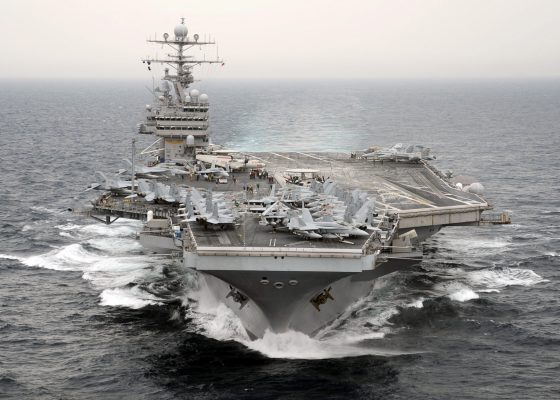
Washington: Even before Commanding Officer Captain Brett Crozier of the US Navy’s aircraft carrier Theodore Roosevelt sent a letter sounding the alarm of COVID-19 positive cases aboard the warship, the Navy’s senior leadership was aware of it and concerned about properly isolating sailors, the Navy’s top admiral told reporters on April 1.
The letter was most likely the result of a misunderstanding about how quickly the process would move, Chief of Naval Operations Admiral Mike Gilday said. It was first leaked to the San Francisco Chronicle and quickly gained national attention ― a sort of canary in the coal mine for what the military is facing as Coronavirus spreads throughout an organisation whose members live in close quarters and one that can ill afford to sideline a significant percentage of its personnel.
“Let me emphasise that this is exactly what we want our commanding officers, our medical teams to do,” acting Navy Secretary Thomas Modly said, though he later lamented that the letter went public.
There had been a plan in place to begin moving sailors off the ship, Gilday said, but Crozier wanted it done more quickly than leadership was comfortable with.
Current efforts to combat COVID-19 are inadequate, according to the Roosevelt’s commanding officer Capt Crozier.
In an appearance on CBS News on March 31, Defense Secretary Mark Esper said he did not believe the Roosevelt needed to be evacuated, but acknowledged the remaining carrier fleet could fill in if it did end up sidelined.
“I have not had a chance to read that letter, read it in detail,” Esper said. “Again, I’m going to rely on the Navy chain of command to go out there to assess the situation and make sure they provide the captain and the crew all the support they need to get the sailors healthy.”
Modly and Esper discussed the issue, Modly told Military Times.
“Maybe there’s a terminology issue in terms of what he thinks evacuation is and what we’re doing,” Modly said.
Current efforts to combat COVID-19 are inadequate, according to the Roosevelt’s commanding officer Capt Crozier.
As of April 1, a thousand of the ship’s 4,800-sailor crew have disembarked, and are being isolated in facilities on Guam’s US Air Force and Navy bases.
In the meantime, nearly a quarter of the ship’s sailors have been tested for COVID-19, and deep-cleaning protocols are in place to protect those who are still aboard.
A skeleton crew of hundreds will have to stay on board, he explained, not only to maintain the ship’s nuclear reactor, but to protect the carrier’s weapons and other systems.
“Taking the sailors off the ship does not make them safer,” he said, adding that Crozier’s manning proposal was too low.
“I don’t believe we can do it with 10 per cent.”
But Crozier’s most cutting critique came at the end of his letter, when he warned that if the Navy didn’t take immediate action, it would be failing to protect sailors.
“My response to that is it’s disappointing to have him say that,” Modly said. “However, at the same time, I know that’s not the truth.”
Of 94 ships currently underway, Modly said, the Theodore Roosevelt is the only one with active Coronavirus cases on board.
As a precaution, some port visits and exercises have been adjusted or cancelled, and senior leadership is looking at how slowing down will affect future training and deployment cycles.








